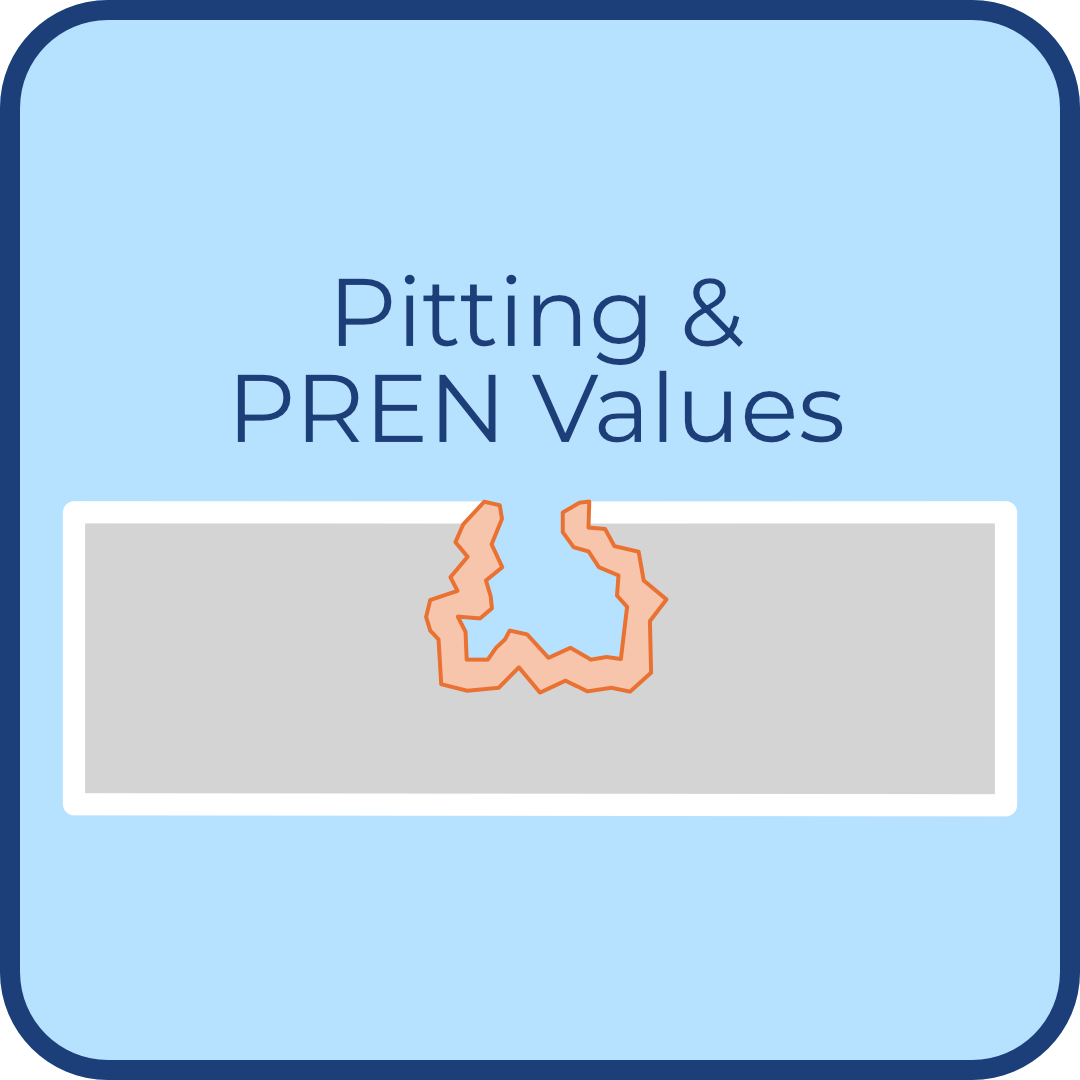
The acronym PREN stands for Pitting Resistance Equivalent Number. It is an approximated number calculated from a formula based upon a material’s chemical composition that estimates a material’s resistance to pitting. This number is primarily used for stainless steels and high nickel alloys that are used particularly in chloride-rich environments.

Pitting corrosion is a localized form of corrosion that causes small, deep holes or pits to form on a metal surface. This type of corrosion is highly localized and can lead to rapid material failure with minimum material loss.
Check out the major types of pitting below:
The following equation is a commonly used formula to calculate PREN:
The higher the PREN value, the better the alloy resists pitting corrosion. Please not that for this specific type of corrosion nickel & copper offer minimal corrosion resistance.
A minimum PREN value of 32 is considered to protect against seawater pitting corrosion.
Check out Nickel Systems PREN values for our stainless steel and high nickel alloy comparison:
UNS Number | Material | PREN Value |
UNS N06600 | Inconel® 600 | 16 |
UNS N07750 | Hastelloy® X750 | 16 |
UNS S17400 | 17-4 Stainless | 18 |
UNS S34700 | 347 Stainless Steel | 18 |
UNS N08330 | 330 Stainless Steel | 19 |
UNS S66286 | Alloy A286 | 19 |
UNS S30400 | 304 Stainless Steel | 19 |
UNS S21800 | Nitronic® 60 | 19 |
UNS N08800 | Incoloy® 800 | 21 |
UNS S31600 | 316 Stainless Steel | 27 |
UNS S31000 | 310 Stainless Steel | 28 |
UNS N06230 | Haynes® 230 | 29 |
UNS N07718 | Inconel® Alloy 718 | 29 |
UNS N09925 | Incoloy® Alloy 925 | 31 |
UNS S20910 | Nitronic® 50 | 34 |
UNS N08904 | 904L Stainless Steel | 35 |
UNS S31803 | Duplex 2205 | 36 |
UNS S32550 | Ferralium® 255 | 40 |
UNS S32760 | Zeron® 100 | 41 |
UNS S32750 | Super Duplex 2507 | 43 |
UNS S31254 | 254 SMO® | 43 |
UNS N08367 | AL6XN® | 46 |
UNS N06030 | Hastelloy® G30 | 48 |
UNS N06625 | Inconel® 625 | 51 |
UNS N06002 | Hastelloy® X | 52 |
UNS N06022 | Hastelloy® C-22 | 65 |
UNS N10276 | Hastelloy® C-276 | 68 |
UNS N08020 | Alloy 20 | 73 |
NSI Material’s PREN Comparison Table
Note that these Nickel Systems materials are those materials which are commonly used when PREN values are being considered.
Get our PREN Tables. See our material comparison. Choose the fastener that is right for your next project to guard against pitting corrosion.
